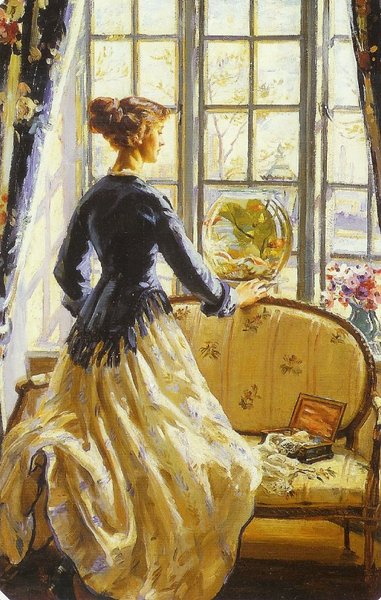
Here he is at work
Antonio Canova (1757-1822) was an Italian sculptor made famous for his masterful marble sculptures that his genius hands delicately rendered to resemble nude flesh. His pieces are the epitome of the neoclassical style. Canova’s work brilliantly marked a return to classical refinement of the Renaissance masters after decades of the theatrical excesses of Baroque sculpture.
A detail of his extraordinary talents
Canova was considered the greatest sculptor of his time and one has but to look at his work to see how very true that assessment was. His work and gentlemanly personality became a model for all sculptors for many years.
.

Canova's bust of Napoleon
In 1802, Canova was invited to Paris by Napoleon, in order to carve marble portraits of the emperor and his mother and sister.
.
Cupid and Psyche
.
'Psyche Revived by Cupid's Kiss' was commissioned in 1787 and acquired by Joachim Murat in 1800, and entered the Louvre in 1824. Canova was a prolific sculptor, and he seduced the whole of Europe with his mythological compositions in which the purity of contours was used to portray a discrete eroticism.
.
Canova illustrates the Romantic Classicism that was so valued at the time: he creates daring images of seductive elegance and form. Both the supple figures and tactful features of his work recall the earlier Rococo, with its charm and realism, but he is firmly Neoclassic in his approach.
.
The three graces
In the area of portraiture he was the absolute champion of idealization. He displayed a sensibility both to naturalism and to the early Renaissance, opening the way to two dominant trends at the beginning of the century: skilled realism and historical subject matter.
A lovely way to start the week, I think.
My love, my care,
Simone

















They look so real, it is so freaky
ReplyDeleteHere's a true story about Canova: Some years ago, I had to replace the feet on a copy of 'Hebe',for a customer, so I began researching the sculpture, and discovered that he made 3 versions of Hebe in white marble.
ReplyDeleteI went to various libraries, and obtained some bad pictures of the sculpture, so after about 3 weeks, I replaced the missing feet on my copy, and gave it to the customer.
Then, I happened to look out of my bedroom window, and noticed that I could see the head of a marble sculpture in the municipal gallery on the other side of the road, as I have noticed for the last 20 years.
I had been sleeping about 60 feet away from one of the 3 original Hebes' by Canova, (in the Victoria Gallery, Bath) but only realised it after I had finished the work.
I have to say that my feet were better than his.
Wow! Beautiful!
ReplyDeleteThat tear is so lifelike.
Thank you for all the beauty, wisdom, and inspiration!
Hello,dear Simone!-)*
ReplyDeleteI am SO gald that I have meet you here,in these Blog Land world...
You gives for us always so joyful,natural moments of pleasure,because you shared always pure beauty with us!
Thank you,my dear friend,
Much Love,
***Violetta***
P.S.
Simone,I have for you one delight Award by my last post,would do you like to checking these,when you have more time,my lovely friend!-)))*
Simone, the art is beautiful. Thanks for sharing. I saw Michael Angelo's sculpture of "David" and it took my breath away. I gazed at it for more than an hour. If hubby had not dragged me out of the museum, I would have closed the place. I can't imagine a sculpture that rivals "David" but Canova's pieces play a close second. Next time I visit Italy or France, I will have to check out his work. Brilliant, simply brilliant.
ReplyDeleteAll the best.
What an incredible talent! The details are exquisite - so realistic. :)
ReplyDeleteI love Cupid and Psyche, beautiful.
ReplyDeleteI truly love that you teach me something new every time I come to your blog. Thank you and Peace, amy
ReplyDeleteBeing a student of Etymology, I have always been amused by the origin of the word 'sincere'. It comes from the latin 'Sine Cire', meaning without wax (as in French 'Sans Cire'). Marble sculptors of the past would fill slight mistakes with wax, but if you wanted a perfect job you needed to make sure it was without such trickery. Therefore 'sincere', 'sine cire', 'without wax'.
ReplyDeleteI just though this might be of interest. Bisou, Cro.
I love that information, Cro, and I mean that without wax.
ReplyDeleteGosh, beautiful art as always! You have been tagged me lady.......
ReplyDeleteThese sculptures are beautiful, Simone. Definitely an inspiring way to start my week!
ReplyDeleteDear Sirs: What is the name of the weeping sculpture? I can't find this sculpture anywhere else on the net. Who owns the copyright to this pic, or is it public domain? Thanks. andrewruf2002@yahoo.com
ReplyDeleteWhat is the name of the weeping sculpture?
ReplyDeleteI loved Canova! I recently saw the 'Venus and Mars' in the Pardo Museum.
ReplyDelete